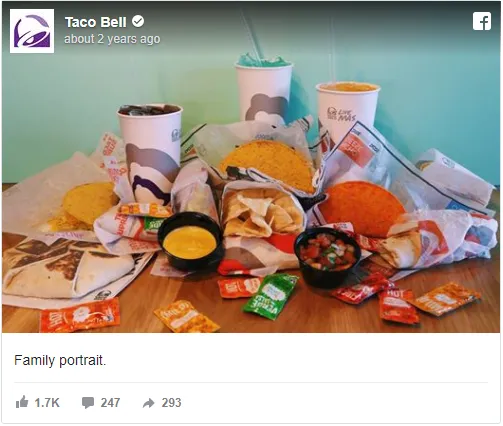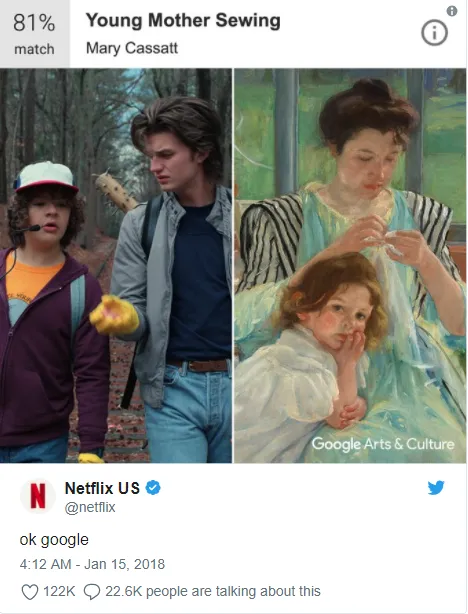How businesses can make the most of visual culture
With 84 percent of marketing communication expected to be image-based by its close, 2018 is the year that your business needs to start making the most of visual culture.
While you can’t disregard text completely and communicate solely via memes, GIFs, emojis,, and videos, it is essential that your startup brings visual culture into the way that you conduct your business.
I tell you why visual culture is so important, and will give examples of how your growing business can make the most of it.
(Recommended reading: Meme Up Your Marketing: How To Use Internet Pop Culture For Brand Promotion)

Social media and visual culture go together
One of main reasons that visual culture is so important to your business is the rise and rise of social media. Don’t believe me? Believe the facts:
- Facebook has over two billion monthly users. Posts with images have 2.3 times more engagement than those without images.
- Twitter has 330 million monthly users. If you include an image with your tweet it will receive 150 percent more retweets than a tweet that doesn’t have an image.
- Instagram is a social media platform that is driven by images. How many monthly users does it have? 800 million.
Your business needs a strong social media presence, and in order for it to make it count you need to communicate with your customers visually.
Match the visuals to the right channel
Just because your customers want you to communicate with them visually doesn’t mean that you can give them any old image and magically increase your engagement levels on social media. You need to get your image targeting strategy right.
For example, each social media platform has different image size requirements for you to make the most of them:
- Facebook: 1200px X 630px
- Instagram: 1080px X 1080px
- LinkedIn: 700px X 400px
- Pinterest: 735px X 1102px
- Twitter: 1024px X 512px
The size of your images isn’t the only thing you need to consider in order to make the most of the visual content you upload to your social media accounts: your users expect a different type of image depending on which platform you are uploading it to, which is why cross promoting doesn’t always work.
Use your best, most high-quality visual content for where it will be appreciated the most, such as your Instagram feed. On other social platforms, such as Twitter, Snapchat, and Instagram stories, you can get away with quick, unplanned snaps. On those channels, it’s more about the message and immediacy.
Sourcing images for your brand
Unfortunately, not everyone has the time to create perfect images or take perfect photos. Not to worry: there are plenty of sites where you can source images from. All you need is to find the right website for your brand’s aesthetic.
If you want to find images that you can use without having to break the bank, Burst is a great place to scour for high quality free images, while Flickr has a library of excellent pictures that you can download for nothing, and Imgur has a whole host of irreverent visuals.
You could even take advantage of user-generated-content (UGC) and source images from your customers – the benefit of this is that if your customer knows you’ve used their image they have a reason to shout about your business to their friends, family, colleagues, and followers. Doing this turns them from customer into another arm of your marketing team. UGC images are also a much more real and raw way to share your brand aesthetic.
Visual storytelling is essential
The main thing you have to think about when creating images is the story that they tell. Take a look at this image from Taco Bell:

It’s not the highest quality image, but it’s quirky, cute and, most importantly, is in tune with Taco Bell’s target audience. Observe how the caption enhances the image and turns it into a funny visual sketch. The clever interplay between words and image turns it into a story.
For an in-depth explanation of just how valuable visual storytelling is to your business, along with the trends that you need to be aware of, watch the interview below with Microsoft’s Communications Designer, Geoffrey Colon.
<iframe width="560" height="315" src="https://www.youtube.com/embed/lGkUvH5kLLI" frameborder="0" allow="autoplay; encrypted-media" allowfullscreen></iframe>
Visual culture doesn’t just mean photos
The use of video in content marketing has increased immensely. This is because it’s an extremely effective way of advertising the benefits of your business and increases the chances of customers buying your products.
See these stats for proof of the power of video content:
- If you have a brick-and-mortar store 50 percent of your customers will want to see a video of what your brand has to offer before they’ll come to your business
- Seventy-nine percent of your customers prefer to learn about your products by watching a video
- Eighty-four percent of customers are likely to make a purchase if they have seen a product on a video
However, as users are flooded with video content online, they become more picky about what they choose to engage with – the ideal length for video content is two minutes and there is a significant drop off afterwards.
The video below highlights the importance of video content.
<iframe width="560" height="315" src="https://www.youtube.com/embed/mUr9yaTJxUQ" frameborder="0" allow="autoplay; encrypted-media" allowfullscreen></iframe>
Connect with your audience using memes
Memes are a great way to connect with your client base, whether they are young or old. These are pictures or videos with funny captions that you can edit to make your own. A good meme will be shared by your audience, hence why many brands try to jump on the bandwagon.
Just be careful – meme culture is a blink-and-you’ll-miss-it deal. Don’t try to recreate memes from years, months, or, sometimes, even weeks ago. The whole point of a meme is that it is current.
This hilarious meme was shared by Netflix in January 2018:

At the time of publication of this article, this tweet has been liked over 122,000 times. They pop-culture-jacked Google Arts & Culture’s new selfie-matching feature by using an image from their enormously popular show, Stranger Things.
Not sure how to bring memes to your business? Check out the video underneath.
<iframe width="560" height="315" src="https://www.youtube.com/embed/aoPJa0Osd_s" frameborder="0" allow="autoplay; encrypted-media" allowfullscreen></iframe>
Visual culture is enormously important to your audience and that means it’s enormously important to your business. Take away the lessons from this article and start putting them into practice today to make sure your business is making the most of visual culture by giving your customers what they want.
(Disclaimer: The views and opinions expressed in this article are those of the author and do not necessarily reflect the views of YourStory.)







